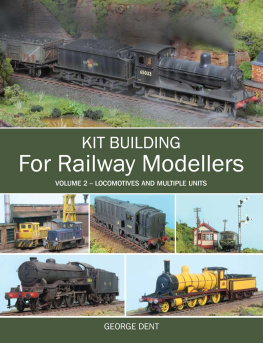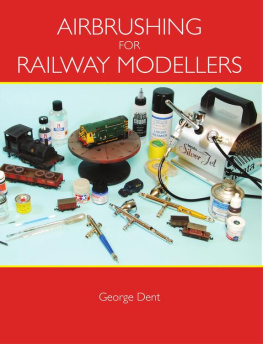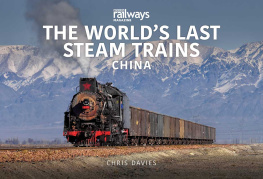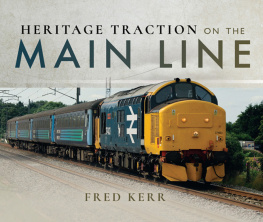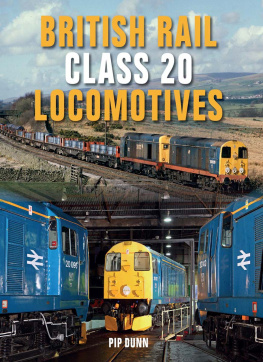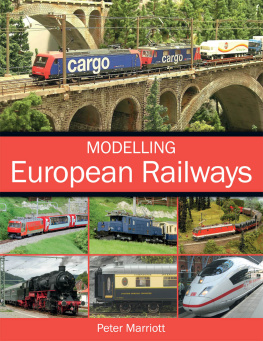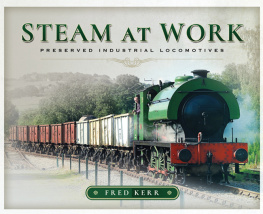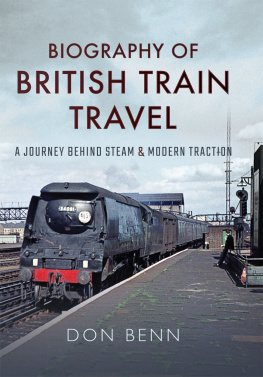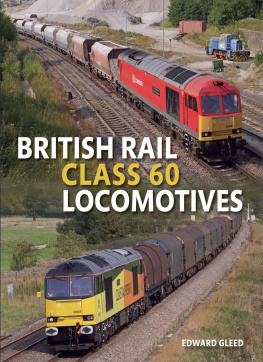

DETAILING AND MODIFYING READY-TO-RUN LOCOMOTIVES IN 00 GAUGE
VOLUME 2
British Steam Locomotives, 19481968
GEORGE DENT

The Crowood Press
First published in 2009 by
The Crowood Press Ltd
Ramsbury, Marlborough
Wiltshire SN8 2HR
www.crowood.com
This e-book first published in 2014
George Dent 2009
All rights reserved. No part of this publication may be reproduced or transmitted in any form or by any means, electronic or mechanical, including photocopy, recording, or any information storage and retrieval system, without permission in writing from the publishers.
British Library Cataloguing-in-Publication Data
A catalogue record for this book is available from the British Library.
ISBN 978 1 84797 852 3
Contents
Acknowledgements
In the first instance, I must extend my gratitude to Simon Kohler (Hornby) and Dennis Lovett (Bachmann) for generously providing the models contained in this book. John Bristow (Deluxe Materials), Alex Medwell (The Airbrush Company), Dave Alexander (Alexander Models), Ken Bridger (Genesis Kits) and John Peck (Precision Labels) have also provided kind assistance over the past few years.
For support, help and advice Id like to thank my colleagues at Model Rail, Ben Jones, Chris Leigh, Dave Lowery and Richard Foster. Thank you also to the many readers and contributors who have taken the time to share their opinions, tips and recommendations through the magazine. Thanks also to Nick Brodrick (Steam Railway), Mike Wild {(Hornby Magazine) and the staff at The Crowood Press.
Various (some now former) members of staff at the NRM went out of their way to help improve my understanding and appreciation for both the steam locomotive and 1980s Nissan Micras: thank you to Roy Boulton, Stan Knowles and David Wright. Thank you, Dad, for your persistence in trying to ensure a rounded knowledge and appreciation of railways and, along with Mum, for encouraging my creative and practical skills.
As much of this manuscript was written on location in Settle, I must thank Jeanne Carr for the use of her idyllic cottage and to the local bakers for keeping me in sustenance. The understanding of my in-laws, Ma and Pa Strange, is appreciated and Im also grateful to Lily-Rose for humouring my train obsession. And thank you, little Joey, for reminding me of just how wonderful it is to see a real, working steam engine.
May I wish much love to Maude for her devotion, even in the face of a beleaguered guardian and, finally, to Julie-Marie: I shall be eternally grateful for too many things to mention here. Thank you.
Preface
My first railway memory involves watching a scruffy blue Class 25 diesel trundling past Donkeys Hill en route to Liverpools northern docks, sometime in the late 1970s. I can easily picture the sight of the locomotive with its solitary brake van and, although it may be embellished by nostalgia, I seem to remember that the driver created a jaunty tune with several toots of his horn. The guard waved heartily and shouted something witty to my indulgent mother who had agreed to wait patiently with her two boys on this summers afternoon, just in case any trains should pass.
Living so close to an increasingly moribund freight line was not the most exciting baptism for a budding trainspotter, especially when set against tales of folk with homes alongside the East Coast Main Line in the days of Gresleys Streaks and A3 Pacifics. However, it had me hooked and, with a fellow enthusiast for a father, it seemed impossible that railways would not form a significant part of my life.
My family later left Liverpool, heading for a small village near Warrington and, while this was initially a bit of a culture shock, Arpley marshalling yard and the West Coast Main Line came within cycling distance, as did three of the LiverpoolManchester routes. Obviously, this being the 1980s, diesel and electric traction prevailed and so, for someone raised solely in the modern railway era, steam traction was inevitably viewed as something related to museums and preserved lines.
Dads tales of his spotting days at Edge Hill of Black Fives, 8Fs, Duchesses and Princesses seemed like they belonged in a far distant past. Excursions orchestrated by my Dad to Steamport Museum in Southport and the odd fling across the Pennines to the National Railway Museum (NRM) were enjoyed as a form of induction into the joys of steam. However, I must admit that I was a bit slow on the uptake as contemporary forms of traction still held my imagination; those trips to York were remembered more for the anticipation of seeing HSTs on the East Coast racetrack. It was probably my first taste of a preserved railway that did the trick, a charabanc tour to Haworth for the (tedious) Bront experience that was enlivened by an unofficial tour of the Keighley & Worth Valley Railways motive power depot. That we didnt ride on the line was not important, as walking amongst various BR Standards, a Midland 4F and a Jinty was good enough for me. Additionally, seeing Bullied West Country Pacific City of Wells coming on-shed, at dusk, will live long in my memory.
Despite my modelling interests remaining rooted in the 1980s BR scene for a while, things changed as I got older and could afford to expand my collection of stock to incorporate more of the 1960s period. The final deciding factor was taking a job at the National Railway Museum as a conservator and any job where you spend your first day reassembling the freshly burnished coupling rods of a Great Western Star class 4-6-0 is going to grab your imagination. My time at York also led me to take a deeper interest in Britains railways, looking further back in time to the pre-Grouping (pre-1922) companies and, in particular, the Midland Railway.
Eventually, I was entrusted with conserving many items from the NRMs collection of models and other small objects and, having now been an active railway modeller for more than twenty years, this led me in 2004 to become the model-maker in residence at Model Rail magazine, one of Britains foremost hobby titles. Having always preferred to model in OO gauge, my professional work has nevertheless meant the odd dalliance with both the larger and smaller scales. In this book, however, I will be concentrating solely on OO gauge.

The author takes the opportunity to examine the frames of the new-build A1 Pacific Tornado at Darlington in July 2007. George modified a Bachmann OO gauge model to represent this unique locomotive and an auction for the finished model raised hundreds of pounds for the A1 Steam Trust. Photo: Ben Jones


